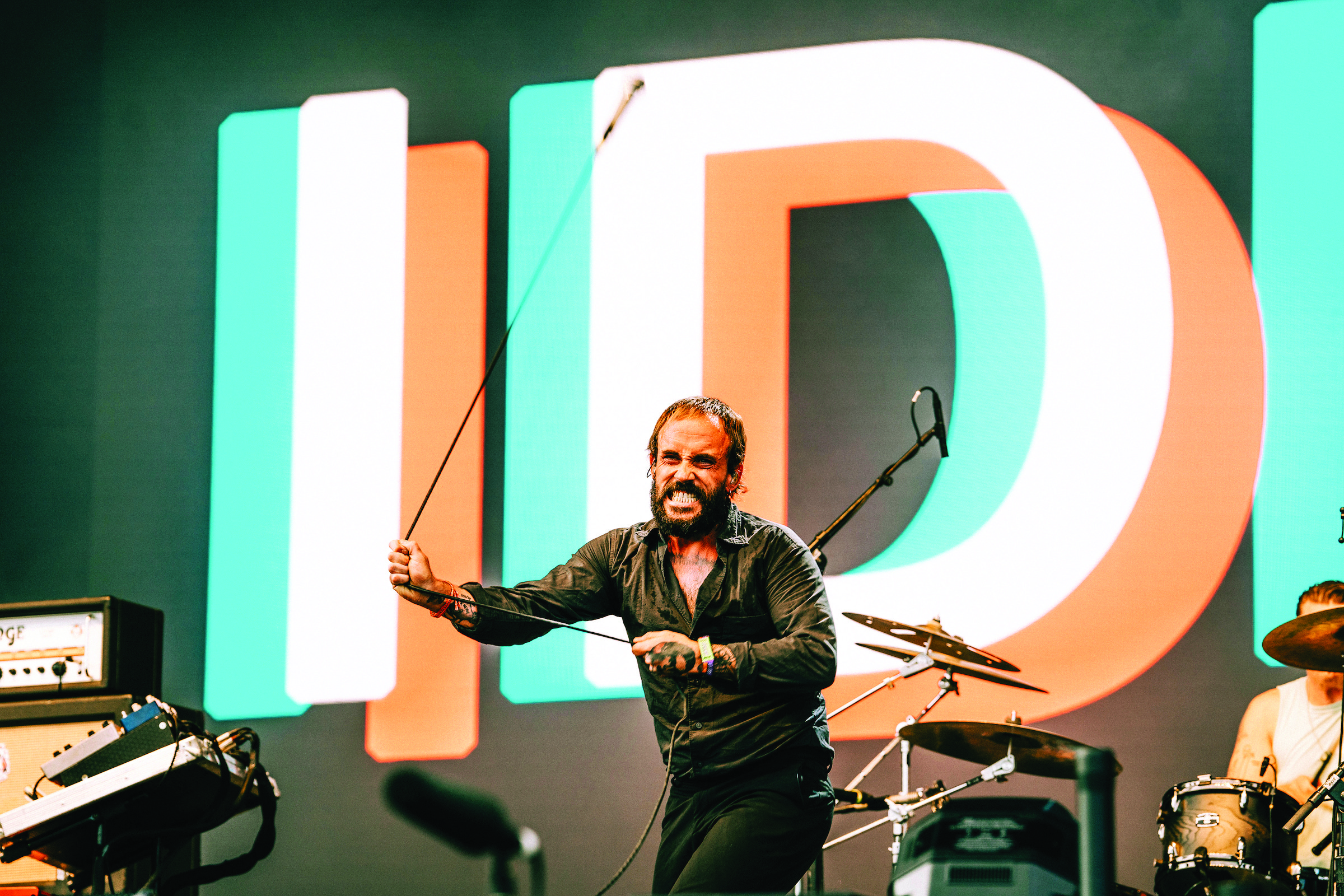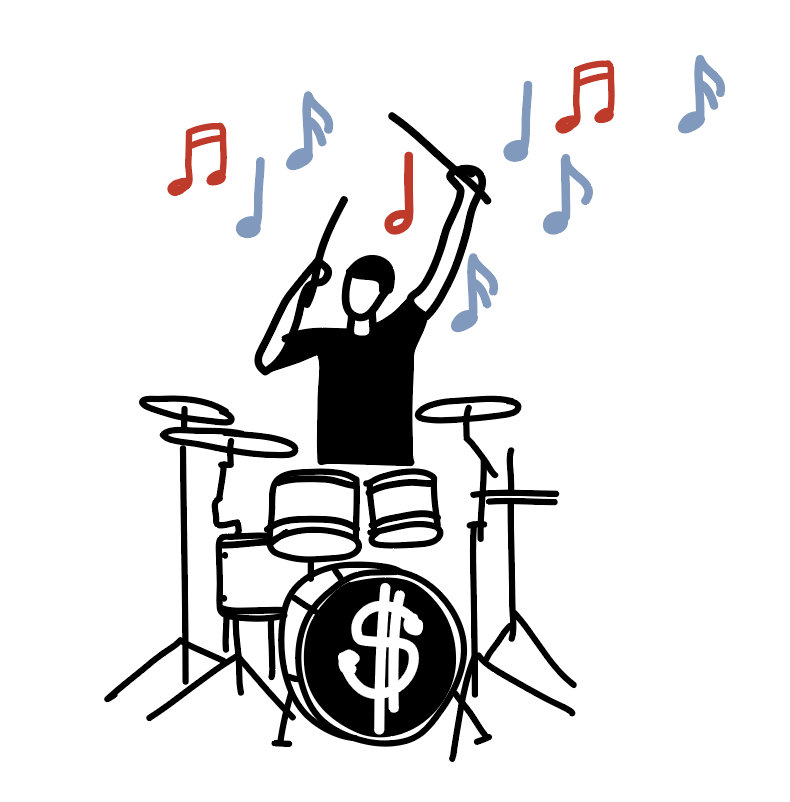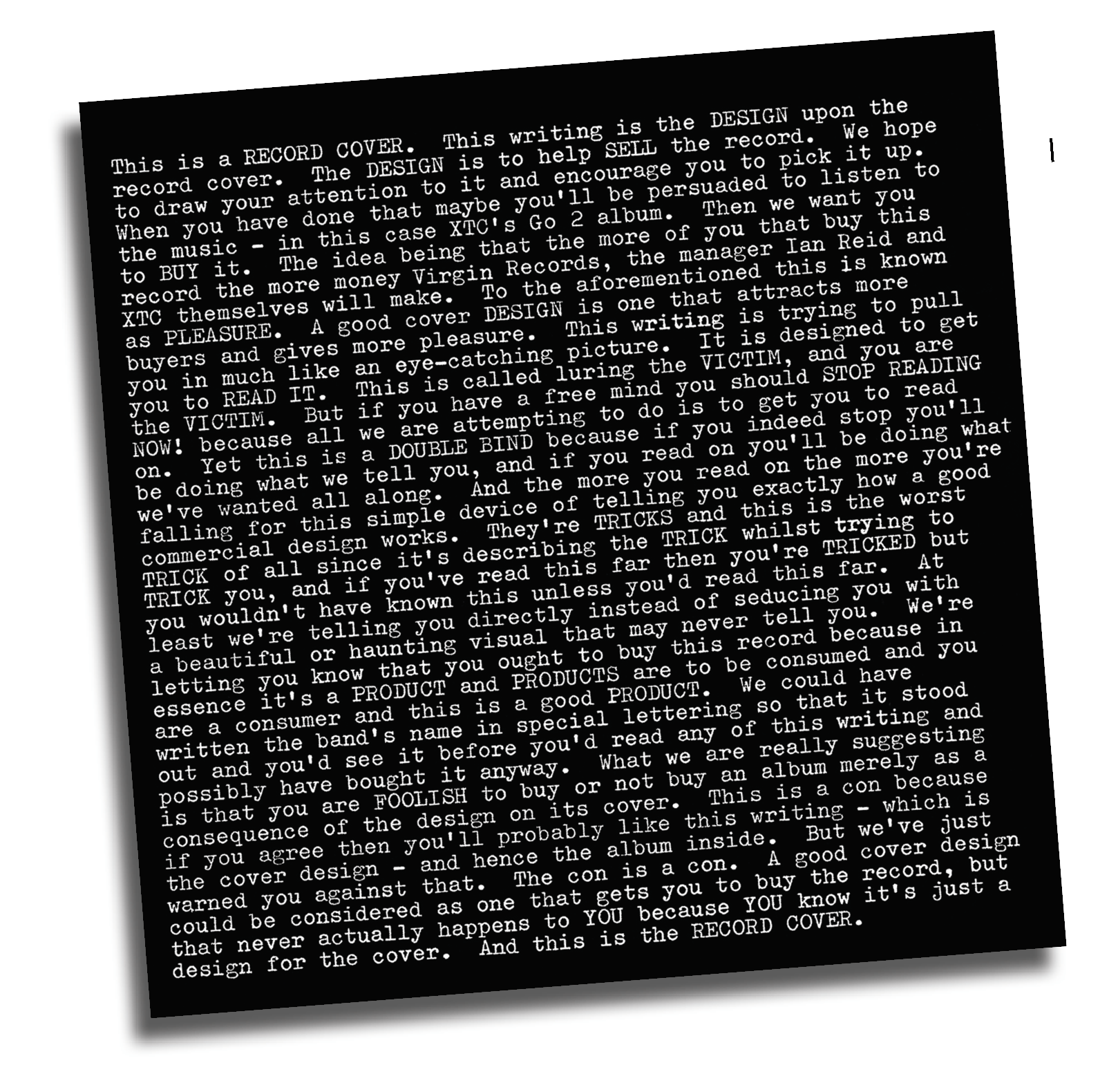Music’s Triple Threats
It’s no longer just about writing and performing songs—musicians have to become their own promoters on social media. Just ask Justin Bieber, The Weeknd and Ed Sheeran.

Thirteen years ago, a 10-year-old Jackie Evancho found herself competing on America’s Got Talent—and it all began with a YouTube video.
From the moment she could really sing, at 6 years old, Evancho’s mother recorded videos of her covering songs from Phantom of the Opera. She built her career on the platform, and she’s been under the eye of video content and social media ever since. Still, she’s never quite gotten a grip on how to use it, she said.
“Music has always been something that I let my gut guide,” Evancho said. “I always thought as long as I’m doing it, someone will listen.”
Then she realized at age 15 that she could use social media as a tool to grow her career.
“But I’m still at a point where I’m trying to figure out the formula,” she said. “I feel like I’m a bit of an old lady in that aspect and don’t understand it much.”
Just the same, Evancho maintains around 328,000 subscribers on YouTube.
Her story brings to mind Justin Bieber, The Weeknd, Ed Sheeran, Alessia Cara and Pinegrove. All were young musicians who posted videos of themselves singing acoustic covers or originals hoping the right person would see it—and in their cases, it paid off.
In its infancy, YouTube was the first content hub for true remote artist discovery. There were no rules. There was no quota for the number of likes or subscribers a person should have. Evancho noted that during that time, her America’s Got Talent “audition” video had zero requirements. All she had to do was sing and post.
But now, the number of likes, shares, followers and subscribers is top of mind on platforms like YouTube, Instagram and TikTok—especially for musicians striving to become known. And artist discovery has changed, too. The days of finding young Biebers on YouTube are numbered.
TikTok has become the main source of artist discovery, but all social platforms play a role, said Jay Schaff, associate manager at Range Media Partners, an online music and video publisher that reaches targeted audiences.
Schaff witnessed the rise of TikTok in the music industry, as artists began incorporating it into marketing plans.
“It’s more of an opportunity for younger artists, and artists in general, to throw things at the wall and not be as insecure about it, whereas Instagram and YouTube add a little bit more insecurity,” he said.
In a recent example, Schaff said his company was brought in to work with Rich The Kid, a rapper whose hit single Plug Walk went viral in 2018. He went quiet after the song’s hype cooled but is now being introduced to TikTok as a way to revamp his career.
So, is YouTube still relevant? Yes, but differently, according to Schaff.
“Once you’re in the industry, signed to a label or have a record deal, it assumes you’re in the position to appeal to other platforms,” Schaff said. “I love YouTube, but it’s not top of mind for discovery purposes.”
He said YouTube is the go-to spot for music videos because most appeal only to an established audience. But of the seven artists he has discovered through social media, four were through YouTube, he said.
YouTube has become the hub for long-form engagement. Many artists with Reclaim Music Group have leveraged it as a live streaming platform, said Sarah DeFlaminio, a senior business analyst at Gupta Media, a marketing agency, and head of marketing for Reclaim, which handles a genre-spanning roster of artists.
“As TikTok continues to take over, even as a search engine alternative, I think it will be interesting to see where YouTube falls in the mix of priorities for many artist management teams,” DeFlaminio said.
Technology has evolved, and musicians need a social media presence to gain and maintain relevance.
What’s expected of artists is also shifting, said Abbie Duquette, artist manager and founder of Loudmouth Management.
“The job used to be just creating music and writing songs,” Duquette said. “Now it’s 10 jobs rolled into one. They’re expected to write music, tour, be an influencer and keep up with the newest trends.
___
Make YouTube Your Partner
When internet content creators hold sway over enough followers, they’re considered “influencers.” At that level, they can make enough money through ads, sponsorships and paid subscriptions to create a career.
But not many musicians can sustain themselves financially by becoming that kind of organic YouTube artist, said Abbie Duquette, artist manager and founder of Loudmouth Management.
Instead, touring, streaming and merchandise sales remain their main sources of income, Duquette noted.
To start earning money through YouTube (not including merchandise or ads), a creator must have at least 1,000 subscribers and 4,000 watch hours per year. That qualifies them to apply for YouTube’s Partner Program.
It’s possible but not likely for musicians to garner an organic following through YouTube, Duquette said.
___

Playing that many roles can disrupt the creative process, but it’s what musicians have to do to stay afloat.
In a recent interview with Variety magazine, YouTube’s global head of music put it this way: “The fine print for an artist these days, which they didn’t sign up for, is [generating] likes, clicks, subscribers—all of these taxing things they need to do to find their fans. I think it’s a real struggle for a lot of them, and it’s also a struggle for the labels.”
Range Media, which has a roster that includes Jack Harlow, Nicki Minaj, Tyga, Cordae, D Smoke and Mariah Carey, works with new and established artists to build on their strengths and develop a plan to downplay their weaknesses.
Last year, the company started its own label, Range Music, and signed distribution deals with Capitol Music Group and Virgin Music & Artist Label Services. Schaff said the label had created opportunities to sign young artists and offer one-off distribution deals.
“That allows us to pick up [an artist] who might only have 5,000 to 10,000 followers and blow them up,” Schaff said.
He manages artists and oversees his own roster and the roster of Matt Graham, Range Media co-founding partner and president. He also handles A&R research for Range Music, which gives him direct insight into what the label looks for in musicians.
As an independent music manager in his first year of law school in Boston, he based decisions on gut feelings. But now, he reviews specific criteria before working with someone, whether for the label or management purposes.
“Certain factors I look for include age, relevance on social platforms, cultural relevance, voice—both singing or rapping voice and cultural voice—and historical data and trends,” Schaff said. “Ultimately, if all those boxes are checked, then it comes down to superstar material. One of the first questions I ask is ‘what are your goals?’”
Schaff noted the constant competition he encounters with other media companies and labels. Most of the time, he goes for young new acts, where some of that back-end research doesn’t always apply.
Duquette’s process is similar, but before signing an artist, she has to believe in their work and feel inspired by it. That often rides on a vibe she gets from their work ethic and passion. Musicians with passion have a good shot at becoming successful recording artists, she said.
Duquette also offered some advice. Artists should try not to bog down in the vast possibilities in front of them, she said. Instead, they can hone in on what excites them and use it to their advantage.
Meanwhile, DeFlaminio noted the lore surrounding algorithmic favoritism and discussed whether certain stats get artists preferential treatment on platforms. Ultimately, she said, we’ll never know. The goal should be to cultivate an engaged fanbase versus a massive fanbase.
Schaff agrees and said musicians should experiment to see what sticks with audiences.
“The misconception is that a lot of things go unnoticed,” he said of listener reaction. “Most of the time, everything is noticed and is just ignored.”
Either way, audience feedback is there for anyone who’s open to it. “If it comes across my desk, then it’s getting on other people’s desks,” Schaff maintained.
____
Mutually Profitable Music Sharing
Creator Music, an audio licensing and revenue-sharing service, is expected to enter beta testing this year. YouTube designed it to simplify agreements between video content creators and musicians, while also generating revenue for both.
The service is meant to appeal to Gen Z—people born between the mid-1990s and early 2010s—and it feeds on the hype of the TikTok video streaming service. Music is fundamental to TikTok because content creators use it in the background of most videos.
YouTube is attempting to make music just as accessible to its creators. To that end, the platform will offer a list of tracks specifying how much it costs for creators to license them from musicians. Negotiations will occur before the music is offered through the platform.
For now, the list will feature mainly independent artists—musicians who aren’t signed to major labels, said Lyor Cohen, YouTube’s global head of music.
“YouTubers reach more listeners than the largest pop radio stations today,” Cohen noted.
____



















